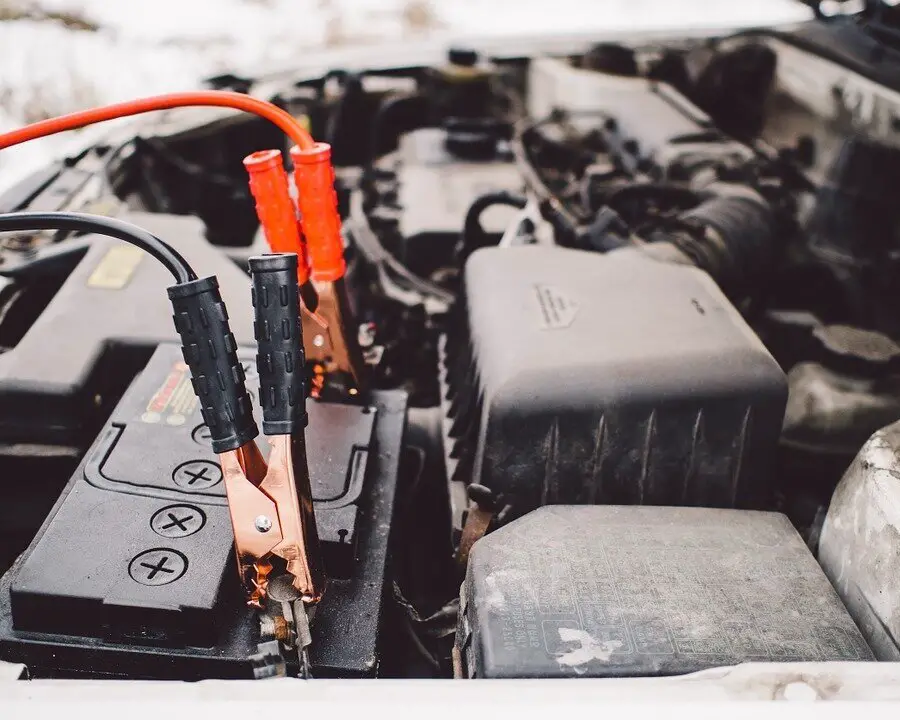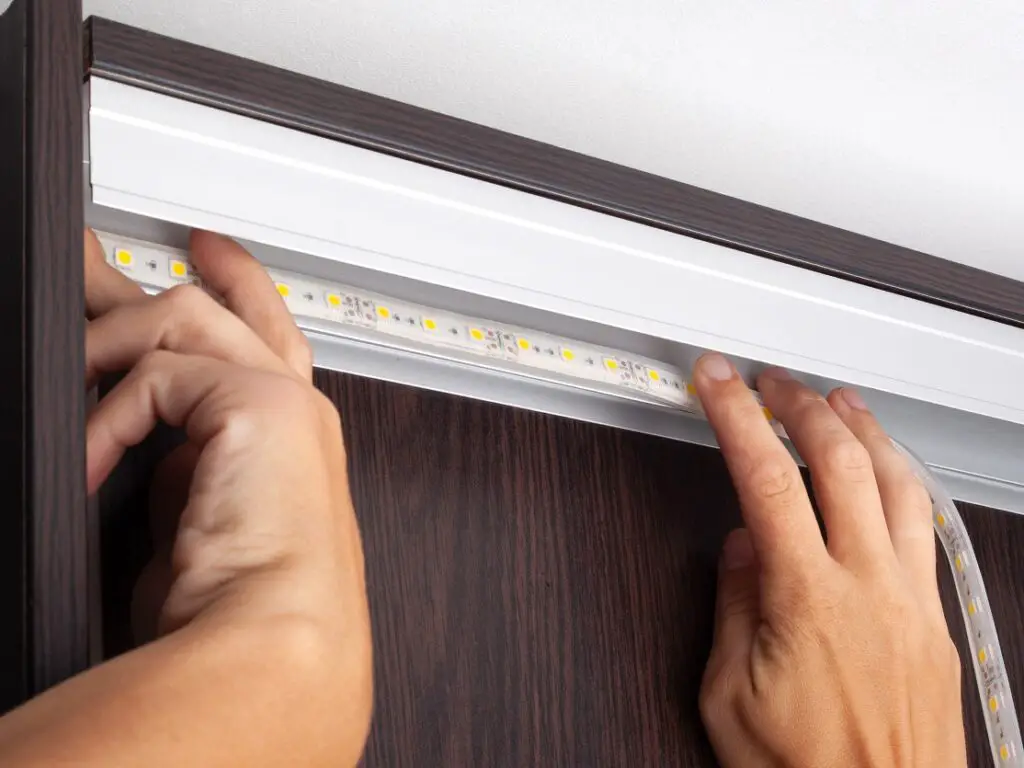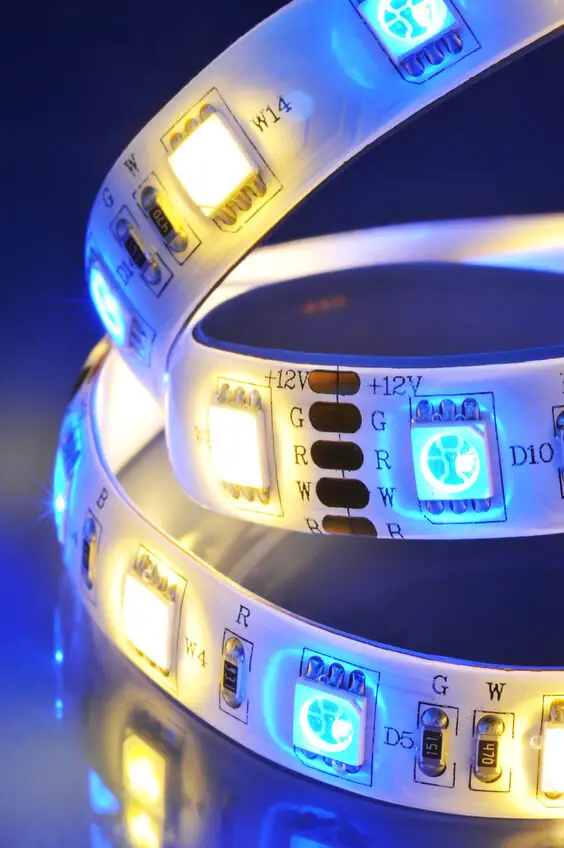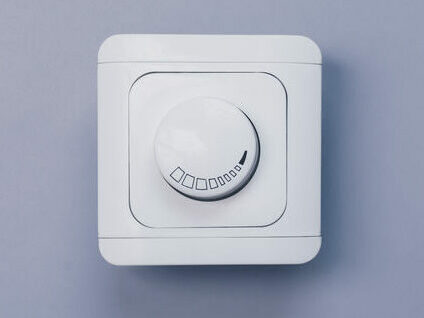Will An LED Strip Drain A Car Battery?
When decorating the interior or underside of a car it is often desired to have some form of LED lighting installed for some extra ambience and general night-time functionality. But how does installing LED lighting stack up against the car’s battery?
When installing roughly around 5-20W of LED lighting to an average car battery it will last between 20-70 hours of continuous use before running out. If the battery is in poor condition it may last less than 5 hours whereas on a brand-new battery it may last over 100 hours.

Contents
How Long It Takes An LED Strip Drain A Car Battery
Now that we’ve established the likelihood of LED lighting draining your car’s battery we can go through how we get to these numbers in more depth.
The Car Battery Size
The first thing we should look at is the average battery size of different cars. The reason why this is important is that a lot of cars have different batteries which can hold a vastly different amounts of energy, meaning that it’s important to know how much power usage we can count on from these batteries.
| Car Brands | Average Battery Size (Ah) |
|---|---|
| Toyota | 70Ah |
| Honda | 60Ah |
| Ford | 60Ah |
| BMW | 80Ah |
| Mercedes-Benz | 75Ah |
| Audi | 85Ah |
| Nissan | 60Ah |
| Volkswagen | 65Ah |
| Volvo | 75Ah |
| Average | 70Ah |
Here we have a table with an average battery size in Amp-hours (Ah) across some of the most common and well-known car companies in the world.
From researching the different batteries these brands use we have concluded that the average battery size used is around 70 Ah. This is the baseline number we will use for further calculations/estimations later on.
If you wish to know the battery size for your specific car we recommend you either check the labelling on it underneath the hood or read the owners manual for your car. This number should be found in either of these places.
The reason why this number is important is because it measures how long the battery can last whilst the engine is off. It simply means that the battery can provide a specific amount of amps in one hour of continuous use when the engine is turned off.
This does also work over longer periods of time. For example, a 60Ah battery will provide 60 amps in 1 hour but can also provide 30 amps in 2 hours or 15 amps in 4 hours.
This is different from when the engine is on, in which the device known as the “alternator” in the engine will start to generate power based on the engines RPM. This means that it will also start taking all the electrical load from the battery and simultaneously charge it.
This is why it’s usually beneficial for the car battery to drive long distances since it gives more time to charge up the power it took to start up the vehicle. On a vehicle without any specific additions from its users, the startup of the vehicle contributes to most of the battery usage.
If you are still wondering more about car batteries and the labellings on them we recommend you to watch this informative video on the subject.
Average Light Strip Energy Consumption Rates
After discussing the size of the battery we can begin to look at how much energy the average decorative lighting uses. Generally speaking, it is not much energy assuming that LEDs are being used, but the numbers may vary.
The energy consumption of any electrical load is measured in watts (W), which may depend heavily on what type of lighting you use, especially when it comes to LED strips.
The reason it varies more with LED strips is that there are a few more factors that dictate its energy consumption compared to fairy lights for example.
For fairy lights, there is a set amount of watts it consumes which is specified somewhere on the package whereas on most LED strips you can dictate the energy usage depending on how long you cut it.
It also depends on what the LED density and strength is on the strip. Density refers to how many LED chips there are per meter on the strip and strength refers to the light output/energy consumption per chip.
If we put these different parameters into a table we get a table that looks like this;
| @0,06W/LED Chip | 30 LED/m | 60 LED/m | 120 LED/m |
|---|---|---|---|
| 0,1 Meters (~4 inches) | 0,25W | 0,5W | 1W |
| 0,5 Meters (~1,5 feet) | 0,9W | 1,8W | 3,6W |
| 1 Meter (~3 feet) | 1,8W | 3,6W | 7,2W |
| 5 Meters (~16,5 feet) | 9W | 18W | 36W |
| Watt per meter (W/m) | 1,8 W/m | 3,6 W/m | 7,2 W/m |
*LED chips @0,06W generally produce a light of about 500 lumen/meter
This table assumes a chip power of 0,06W/chip, which equates to roughly 500 lumens per meter when put on a strip at an average density.
The three most common LED strip densities are;
30 LEDs per meter (9 per foot)
60 LEDs per meter (18 per foot)
120 LEDs per meter (36 per foot)
Out of these strip densities, 60 LEDs per meter is the most common one.
For this reason, we will use that density in the following calculations in order to provide the most realistic answer possible.
We will also count on there being around 5 meters worth of strip in order to get a somewhat realistic baseline for how much energy the decorative lighting may be used, which would be 18W.
This is however meant mostly for estimations, if you know specifically what wattage your lighting is you can simply use that number instead and ignore these estimations.
LED Lighting Car Battery Consumption Example Calculations
Now that we have some specific numbers on how big a car battery is and how much power we have installed in terms of lighting we can start calculating how long it might take for it to drain the battery entirely.
For the sake of realism and providing the most accurate answer possible, we will do three different calculations. These will be the worst-case scenario, an average scenario or the best-case scenario. These will all use the same lighting solution with 18W but have different battery strengths and charges.
That said, if you know that your installation only uses 9W for example instead of the 18W we will use here you can simply adjust the watt value and re-run the calculations to get an accurate answer for your situation.
Worst Case Scenario
For the worst-case scenario, we will assume your car battery to be 50Ah which is 50% charged. We will also assume that the battery is slightly older and has lost some of its original capacity, let’s assume it has lost 40% of it. These conditions are obviously less than ideal but not terribly unrealistic.
If we apply these conditions to the battery we can calculate how many amp-hours it may use before running out completely. That calculation looks like this;
50Ah * 0,5 * 0,6 = 15Ah
Now that we know that we have 15Ah to use we need to convert that into watt-hours (Wh). This can be done by multiplying the Ah with the voltage of the battery, which for cars is generally 12V. Calculating the Wh looks like this;
15Ah * 12V = 180Wh
With the 180Wh number, we can now calculate how many hours we can run our 18W lighting installation. That calculation goes as follows;
180Wh / 18W = 10 hours
This means that in these set conditions the battery will last around 10 hours with our 18W lighting installation. This said it is possible that the car battery is in an even worse state than we have assumed, so take this number as a ballpark estimate if you aren’t certain of all the specifics.
Average Case Scenario
For the average case, we will assume a car battery size of 70Ah which is about 80% charged. We will also assume that it has been through a bit of use and has lost some of its original capacity from that, so let’s assume it has lost 20% of it.
If we apply these conditions to the batteries we can calculate the number of amp-hours we can use before it completely runs out. This calculation looks like this;
70Ah * 0,8 * 0,8 = 44,8Ah
With the number of 44,8Ah, we can calculate the Wh just like the previous case calculation with the help of the car battery’s 12V. That calculation looks like this;
44,8Ah * 12V = 537,6Wh
With the number of Wh in our hands, we can look at the amount of time the battery can last with our 18W lighting installation. That calculation goes as follows;
537,6Wh / 18W = 29,9 hours
This means that during average conditions the average car battery will be able to provide an 18W lighting installation with power for roughly 30 hours before running out.
Best Case Scenario
For the best-case scenario, we will assume you have a 90Ah battery that is fully charged. We will also assume that the battery is practically brand new, meaning no significant capacity loss. That means no calculation needs to be made since there is no degradation, but for continuities sake, we will account for one anyway.
90Ah * 1 * 1 = 90Ah
With this number we can again calculate the amount of Wh we can use, which looks like this;
90Ah * 12V = 1080Wh
Now we can look at how long the battery will last with our 18W installation.
1080Wh / 18W = 60 hours
This means that with an ideal and practically unused battery for our 18W lighting installation it will last for about 60 hours of continuous use.
Additional Calculation Notes
Here are some notes about these calculations you might want to consider for your own situation.
18W is assuming a total of 5m light strip throughout the vehicle, which may be quite a lot depending on the installation. Adjust this number to your lightings power usage for increased accuracy.
The car battery capacity may also vary more as it can really be anywhere between 40-200Ah. While batteries in ranges 60-90Ah are the most common it is worth noting that yours may be outside of the calculations done here.
These calculations assume that the battery is continuously providing power to the lighting without ever getting the chance to recharge through the alternator. Given the chance to recharge the battery will last significantly longer.
Starting a car uses roughly 0,25Ah, which means that in order to avoid having problems starting your car you should conserve about 0,5Ah in your calculations.

Ways To Increase Car Battery Life
Now that we have some general numbers as to how long these car batteries will last we can look at some ways to increase the battery life.
Adding A Switch
The first way to increase the life of your car battery is to install a switch to your lighting. This is assuming that it is installed directly on the car’s battery and not via the cigarette lighter outlet. This is because it is very easy to simply pull the cigarette lighter out from its socket to act as a switch while there might not be a switch function if it’s installed directly on the battery.
The reason a switch is important is that it allows you to turn the lighting off when it’s either not desired or not needed, meaning that you don’t use unnecessary electricity on it. This could significantly increase the battery life.
The best way to implement a switch would be to physically install it somewhere along the beginning of the electric wire which connects to the lights. However, this is assuming that there is no app functionality to do this.
With a lot of decorative car lighting, there is an attached app that you can download on your mobile device. These apps commonly allow you to remotely control the colour of the light but also the on/off state. This means that you can simply make use of this as a switch.
That being said it should be noted that these type of lights will always use a tiny bit of electricity since they need the power to be on standby before receiving their next instruction.
Dimming The Light
If possible, another energy-saving measure would be to dim the lighting. When dimming LED lighting, much like any other lighting, it will use less energy due to the light output being less.
This will not only cause the energy usage to decrease but it will also increase the lifespan of your lighting. This is for a few reasons, mainly due to the deterioration it experiences becoming spread out over a longer period of time.
This function would either be installed like a regular switch or be controlled via an app again. The app functionality is usually pretty ideal since it has a slider that allows you to dim it just enough to save energy but not too much to the point where the lighting becomes redundant.
One thing to note though is that not all LED lighting is dimmable. This feature will usually be evident in the product description or in the app used to control it.
Drive Long Distances Between Uses
Another way to make the battery last longer is to simply drive some distances between lighting uses. This is because when a car’s engine is running it starts to restore charge through the alternator in the engine.
This means that if you’re smart with how you use your lighting in relation to how much you drive around you can quite efficiently keep your battery in a good condition at all times. This is at least until the capacity starts decreasing by any major amounts.
Decrease The Amount Of Lighting
While this is the solution we’d rather not resort to, it is also an option to simply decrease the energy consumed by the lighting. This can either be done by opting for more energy-efficient solutions or cutting down on the number of lights and assuming that you’re already using LEDs you’re mostly forced to start to remove lighting.
However, this shouldn’t be necessary assuming that your lightings energy consumption is below 25W or so. This is to ensure at least a few hours worth of light before running out. This said, the less energy used on lighting the longer the battery will last.
LED Strip Recommendations
With all of this said we would like to give a few recommendations as to which LEDs you could install on your car for the best effect.
Interior Floor Lighting
For a lighting solution aimed at illuminating the floor of the car, we recommend this 4-piece set of LED strips, which is currently priced at $12,99 at LightInTheBox at the time of writing this.
We recommend this one in particular because it has multiple fun functions such as an app in which you can control the lighting as well as a music function where it will change colours by interacting with the music played in the car.
It is also easy for the average person to install since it is installed with simple adhesive and an outlet to the cigarette lighter.
Interior Outlining Lighting
For a lighting solution that is more focused on illuminating the dashboard and general interior of the car, we recommend this 5-meter flexible interior lighting strip, which is currently priced at $9,99 at LightInTheBox at the time of writing this.
We recommend this because it is flexible and therefore very easy to install with some simple adhesive work. The main downside to these is that they can’t switch colour and will only shine in the specific colour you order, however, it does make up for it with the ease of instalment and use of it due to its simple USB power supply.
Exterior Underside Lighting
The last product we’d like to recommend is for lighting up the underside of the car as they do commonly in video games or in movies. For this, we’d like to recommend this 4 piece set of car underglow lights, which are currently priced at $29,99 at LightInTheBox.
While these aren’t exactly a small load on the electricity side, we like these because it adds a very cool effect to the car that you can’t get any other way. In addition to that, it can be controlled via a separate controller or via an app.
However, it may be a bit more challenging to install due to having to install it on the underside of the car and get the power supply properly set up.
Summary
So what is the main takeaway from this article? There is a lot to digest, but the main points we’d like you to remember are;
The amount of time a car battery will last depends on what size the battery is and how much lighting is installed.
In order to increase the battery lifespan, you should make sure to charge it between uses and dim/turn it off whenever possible.
Be aware that the battery is mainly used to start the engine up, so make sure that it doesn’t ever completely run out to the best of your ability.





